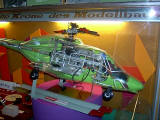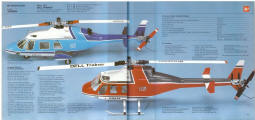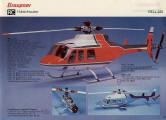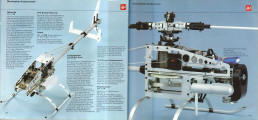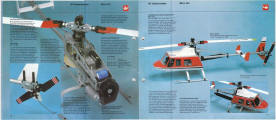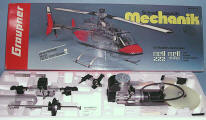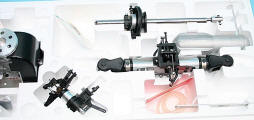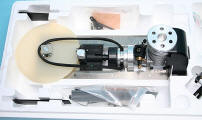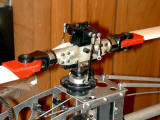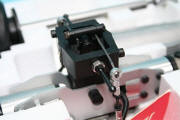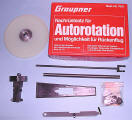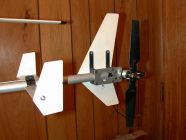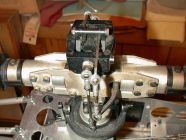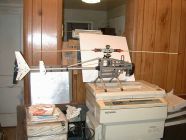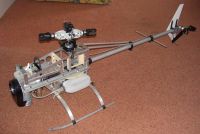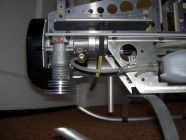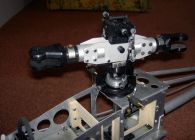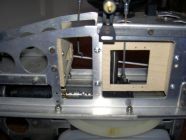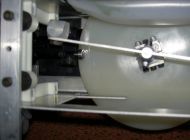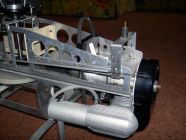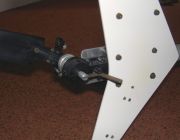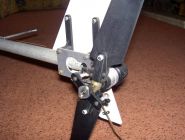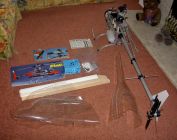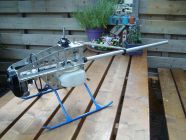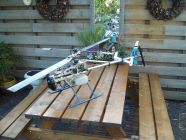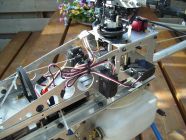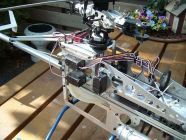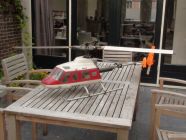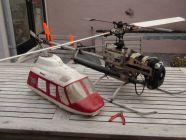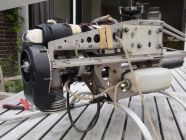Graupner Bell_222 / Bell Trainer (1979)
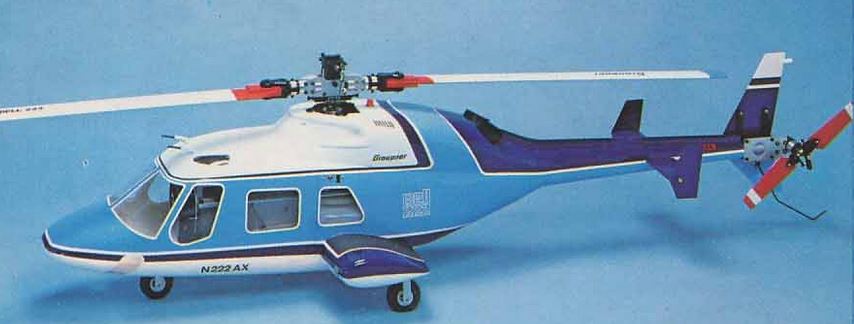 |
Specification:
|
|||||||||||||||
| Documents: | ||||||||||||||||
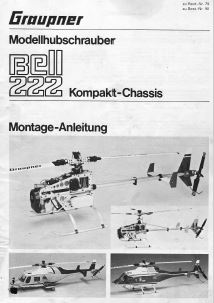 Graupner Bell_222 chassis - Detailed instruction manual for the basic mechanics chassis (German) |
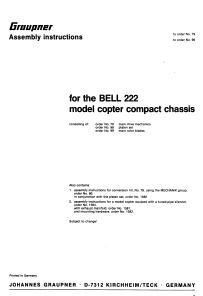 Graupner Bell_222 chassis - English addendum to be used with German language chassis manual above |
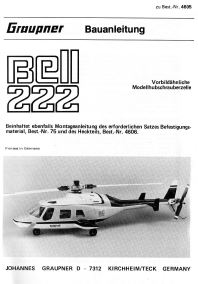 Graupner Bell Trainer body - Detailed instructions for fitting the trainer body (German) |
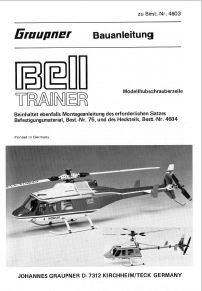 Graupner Bell_222 scale body - Detailed instructions for fitting the scale body (German) |
|
||||||||||||
| Reports: | ||||||||||||||||
Pod and boom 'flybarless' rotor head model model presented at the 1979 Nürnberg show. Using the same formulae as the Schlüter Bell_222 of 1977 it was available in two forms; as a full scale model Bell_222 or as a semi-scale trainer/sports model of the Bell 212.
When considering the next model, the previous Bell 47G type of plastic construction was considered unsuitable for a large machine and although the Bell 212 had proved to be one of the best scale helicopter around, it did have its limitations. For one the body, as an integral part of the build made it expensive and difficult to repair in a 'mishap' and the mechanics, whilst very robust had limited pitch range. In light of the success of the Schlüter Bell_222, Graupner decided to follow the same formulae of a 'Pod & Boom' set of mechanics that could be utilised in a number of different airframes. However, rather than design from scratch a complete new airframe they decided that as the 212 mechanics were reliable and robust they would be kept and an airframe developed to 'join up' these sub assemblies. As a result, instead of two side frames bolted together through bearing blocks etc as Schlüter mechanics, the airframe was formed by a number of smaller plates bolted together 'Mecano like' which resulted in a 'chunky' metal box appearance. Standard landing skids and rear fins were included with the mechanics thus making a complete flying assembly less body work.
Though similar in appearance and control layout to the original flybar head, for the revised flybarless head the main body and blade holder were 'beefed' up in order to take the increased forces that the increased performance of the engine and control system would impart. The basic operation of the top frame imparting cyclic control to the main blades through the collective linkages was retained except, instead of the swashplate linkages rotating the flybar which then moved the top frame, the linkages were connected directly to the top frame thus making the flybar redundant.
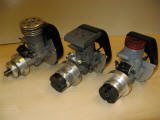
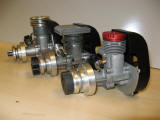 Full range of Stamo engines including original Red head fitted to the Bell 212.
Full range of Stamo engines including original Red head fitted to the Bell 212.
Following on from the experience of the PDP engine in the Bell 212 this model was fitted with a 'Round' heat sink head which was smaller in diameter but deeper than the previous version 'rectangular' head.
The helicopter was therefore available with a number of options;
- Scale model - Bell_222 body with tricycle undercarriage.
- Trainer - Bell 212 body with skid undercarriage.
- Mechanics - Flying assembly for use in aftermarket scale body.
Note that both bodies were made of light weight clear plastic secured to the mechanics chassis by a number of brackets.
As a trainer machine then a 222 body was considered to complicated a shape and would not look right with skids so the Bell 212 was chosen instead. This body comprised of a two piece front cabin which could be used on its own, as per the photo above (which looks completely 'wrong'), or with a one piece tail section which just laid across the rear boom and was open at the bottom; when spayed up this latter option really did look good...... Additionally, in order to save confusion, Bell_222 and Bell 212 as names are nearly identical and Graupner did not want buyers selecting the wrong option so with the 212 Body fitted it was to be known as the "Bell Trainer".
Graupner Bell_222 Platen addendum - Instructions for the conversion to five servo operation (English)
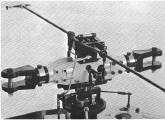 Graupner Bell_222 Flybar - Detailed instructions for converting to flybar type rotor head (German)
Graupner Bell_222 Flybar - Detailed instructions for converting to flybar type rotor head (German)
Whilst the introduction of the Bell_222 with a near scale look due to being flybarless was considered a good move it was not generally appreciated and the majority of flyers still wanted / required the inherent stability of the flybar head. Additionally, the Trainer was meant as a trainer to flybarless flying and not as a basic trainer which at that time was a model type that Graupner did not market. In order to address these two points, late in 1980 (or early 81 TBC) Graupner 'reverse' engineered the rotor head and provided a conversion kit to change it to flybar operation.
Autorotation and inverted flying had started to become a feature of advanced helicopter aerobatics and so the mechanics were developed to include these abilities and a conversion kit them produced. Autorotation was a simple enough matter as it only required changing the main gear wheel to include a 'one way' bearing and the main mast to suit. However, one of the limitation of the rotor head throughout its use since the Bell 212 of 1973 was a limited collective pitch range. For inverted flying it was necessary to have as much negative pitch as positive and so it was necessary to revise the head top block and collective linkages in order to achieve the increase in range required.
Graupner Bell_222 Auto-rotation - Instruction for fitting the autorotation and inverted capability upgrade 1981 (English)
Graupner Bell_222 Auto-rotation - Instruction for fitting the autorotation and inverted capability upgrade 1982 (German)


